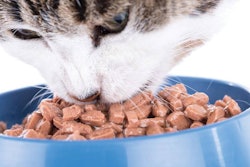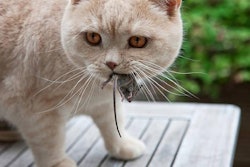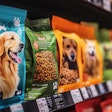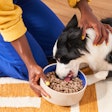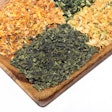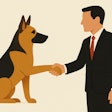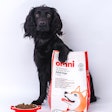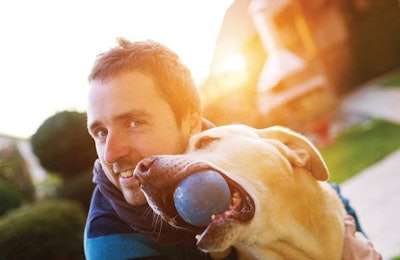
Generation Y, the so-called “Millennials” born between 1981 and 2000, makes up 24% of the US pet owner landscape, according to the American Pet Products Association (APPA)’s 2016 Generational Report. While the Millennials have not yet caught up to Generation X (30% of the pet-owning population in the US) or the Baby Boomers (37%) by APPA’s estimate, the gradual “aging out” of Boomers and the “aging up” of Gen X make Gen Y an inevitable force in the pet market—and, therefore, in pet food.
“Millennials have become a strong consumer force in the pet market due to their sheer population numbers and the impressive buying power they bring to the table,” said David Sprinkle, research director for Packaged Facts. “They are more likely than other pet owners to both expect to spend and to actually spend more on higher-priced pet products and pet care services.” A March 2016 Packaged Facts report, “Millennials as pet market consumers,” puts Millennial pet ownership a bit higher than APPA estimates, at 31% of the total US pet-owning population—that’s 43 million pet owners between the ages of 18 and 34.
There is another reason for the industry to pay attention to Millennial pet owners: growth potential. According to Packaged Facts data, the number of Millennial pet owners grew 25% between 2007 and 2015, while pet owners in the 35+ age group increased 14%. Current projections state that Millennials will be responsible for adding another 2.6 million pet owners between 2015 and 2020. Further, Gen Y currently represents a significant population about to enter a stage of life where spending on pet products and services increases dramatically—already, in 2014 households headed by Millennial consumers spent US$11 billion on their pets, according to Packaged Facts. (For more on pet ownership growth in various age brackets, see figure, Pet ownership by age bracket 2005 vs. 2015.)

As the older generations stabilize their pet ownership, the 18–34 age group (Millennials) continues to grow.
According to APPA data, those pet owners are fairly diverse when it comes to what types of pets they have. Nineteen percent of Millennial pet owners have freshwater fish, for example, and between 3% and 10% own saltwater fish, reptiles, birds or other small animals. This dovetails naturally with the living situations of Gen Y, who are less likely to be homeowners than the older generations and may find that smaller pets better suit their lifestyles—not surprising when the youngest Millennials are still in high school and the oldest are in their mid-30s.
But that doesn’t mean dogs and cats have been forgotten; in fact, they still make up the majority of Gen Y pet ownership. APPA data says 74% of Millennial pet owners are dog owners, while 49% are cat owners. And pets are definitely part of the family: 79% of Gen Y pet owners count “spending time with my pet” as a leisure activity they partake in, according to APPA.
Packaged Facts data backs this up and expands on it. According to a February 2016 National Pet Owners Survey, Gen Y pet parents aren’t just acknowledging the importance of their pets in their daily lives, they’re ready and willing to throw money behind the sentiment. Sixty-four percent of Millennials pet owners agreed with the statement, “I am spending more on pet products than I used to,” compared to 38% of those aged 35+. More than half agreed with the statement, “I would rather spend money on products for my pets than on things for myself” (compared to 39% of the 35+ crowd). A majority of Gen Y respondents also said their pet food focuses are natural ingredients—good news for the specialty pet food market—product safety and companies that focus on pet welfare.
It’s clear that the Millennials are becoming a key component of the pet product landscape. But what, exactly, does that mean for the pet food industry? Well, according to Packaged Facts data, Gen Y pet owners are less concerned than other pet owners with brand loyalty, and this consumer characteristic crosses over into the approach Millennials take when they buy food for their pets. Compared with pet owners in the 35-and-over age group, millennial pet owners are much less likely to think it is important to “get the specific brands I want” when shopping for pet products and are far more likely to have tried a new brand of dog food in the last 30 days. So traditional brand marketing is less likely to be effective.
In addition, Millennial pet owners are much more likely to use raw pet food or pet foods with formulations geared toward enhancing the health of their pets. Compared to pet owners in the 35+ age group, Gen Y pet owners are more likely to trust in their own ability to take care of the teeth of their pets at home and consequently are much more likely to purchase pet oral care/dental hygiene products. This is more good news for the specialty pet food market, which caters to exactly these kinds of consumer needs.
With the Boomer generation arguably aging out of pet ownership and Gen Xers at a more established point in their lifestyles, it makes sense that the Millennials—who are just heading off to college, just entering the workforce, and just beginning to settle into careers and families—are taking their place as the generation to watch when it comes to pet trends. Their pets are, undeniably, part of their family, and as Gen Y gains more resources, it’s only natural that a portion of those resources—perhaps even a larger portion than we’ve seen in other generations—goes towards their four-legged friends.
Trends within the Millennial pet owner demographic
Cat owners
In October 2015, Purina surveyed Millennial cat owners in the US. In general, cat owners said their feline friends suited their busy lifestyles. Cats are seen as more independent than dogs, but are still sociable and comforting. In addition:
- 88% consider themselves similar to their cat, and nearly the same number say they’re “in sync” with their cat.
- 57% consider their feline friends as important as the friends in their lives, and two in five say that owning a cat means they have a new best friend.
- 86% consider their cats to be a loyal companion, and nearly one in two say they tell their cat secrets no one else knows.
Millennial men
According to Packaged Facts, while the majority of Millennial pet owners see eye to eye on their consumer habits, there are some trends that seem a bit stronger in Gen Y men. For example, they are somewhat more likely than Millennial women to strongly value buying pet foods that have natural ingredients (34% vs. 29%) or that are perceived as safer/less subject to contamination (28% vs. 22%). Millennial men are also more likely to strongly agree that the participation by pet brands—or by pet retailers—in pet rescue and welfare causes plays a significant role in what and where they buy.
Gen Y men are more likely to strongly agree that they are spending more on pet products (at 33%, vs. 30% for Gen Y women) or that they’d rather spend money on pet products than on things for themselves (at 27% vs. 20%). They are also much more likely to prefer small pets that you can take with you more places (28% strongly agree and 33% somewhat agree, vs. 19% and 26%, respectively, among Millennial women), and to hope to be pet parents in the future, even though they aren’t currently.
More pet market trends




